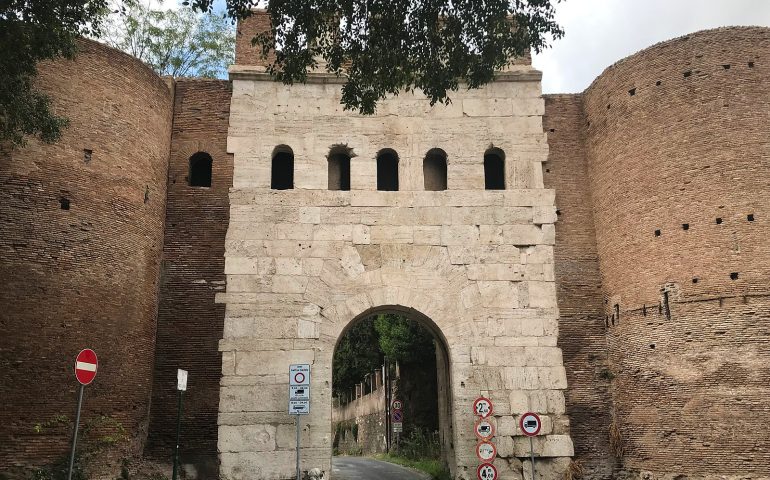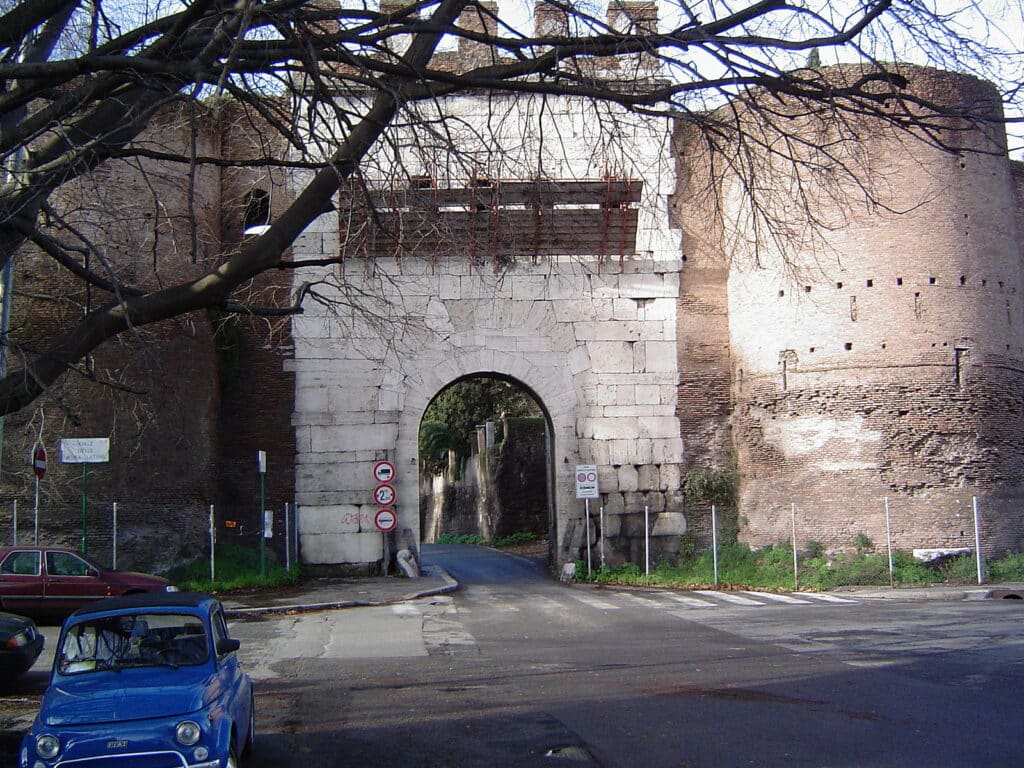Where does the name Lazio come from?
Start our journey to get to know the Gates of Rome one by one. In fact, the city is surrounded by imposing protective walls that delimited its borders and by 14 access gates. An important anecdote is linked to one of these.

For each door, there are hundreds of associated anecdotes. When you cross these doors it seems to cross not only a frontier and therefore space, but to cross time.
One of these fourteen gates is the Porta Latina, whose name derives from the name of the Via Latina in the perimeter of Lazio and belongs to the Aurelian Walls.

Unlike other gates that have undergone many changes over the years, the Porta Latina has remained the one that has had fewer reinterpretations than it originally was, despite the frequent conservation restorations and rearrangements of the medieval and more recent times. On the sides it is possible to see the monogram of Constantine while on the right the Maltese cross.
A legend that spread in 1600 tells that the flight of the god Saturn towards the Lazio countryside took place at the point where the gate is located, dethroned by his son Jupiter.
The Roman god, a bearded elderly man dressed in a cloak and holding a scythe, whose Greek equivalent is identified with Cronus, is considered the founder of agriculture and civilization. He is represented with wool laces on his feet, a characteristic of slaves. For this reason the Saturnalia are associated with him, an event on December 17th where slaves were granted a day of freedom and were allowed to eat and be served by their masters.

Before being dethroned, Saturn devoured his children and the paintings by Goya and Rubens that portray him in the act of cannibalism are known.
Tradition has it that once expelled from Olympus, he became a “fugitive” in the countryside surrounding Rome and someone associates the attribution of the name Lazio to the region to this fact, i.e. from the verb “latere” which means precisely to hide, to be hidden .
According to the stories, the disappearance of the god caused the progressive decline of humanity.

In 1576 and then in 1656 it was closed, both times, due to the plague. The second time it was prevented from passing for about 13 years until Cardinal Giulio Gabrielli reopened it in 1669 with a pompous ceremony. From 1800 to 1911 it was closed following the loss of importance of the Via Latina for the Appian Way. In 1870, before arriving at Porta Pia, the attempt for a breach to enter the city failed right here.
The name of Saturn seems to derive from the Indo-European root sat, that which produces, which gives life, which fecundates.
According to the stories, Saturn was King in the golden age, where men and Gods lived together, with all kinds of blessings, lived for a long time without growing old, the world was free of wars and people could afford not to work thanks to the numerous fruits spontaneous on the earth.
After being dethroned by his son Jupiter, Saturn, who fled from the Porta Latina, was however then chained in a tomb in Lazio, asleep and wrapped in sheets. Whoever manages to find him and wake him up, will be able to see him reborn as a child and we will be able to witness the restoration of the Golden Age.
History of the roman empire fron National Geographic
